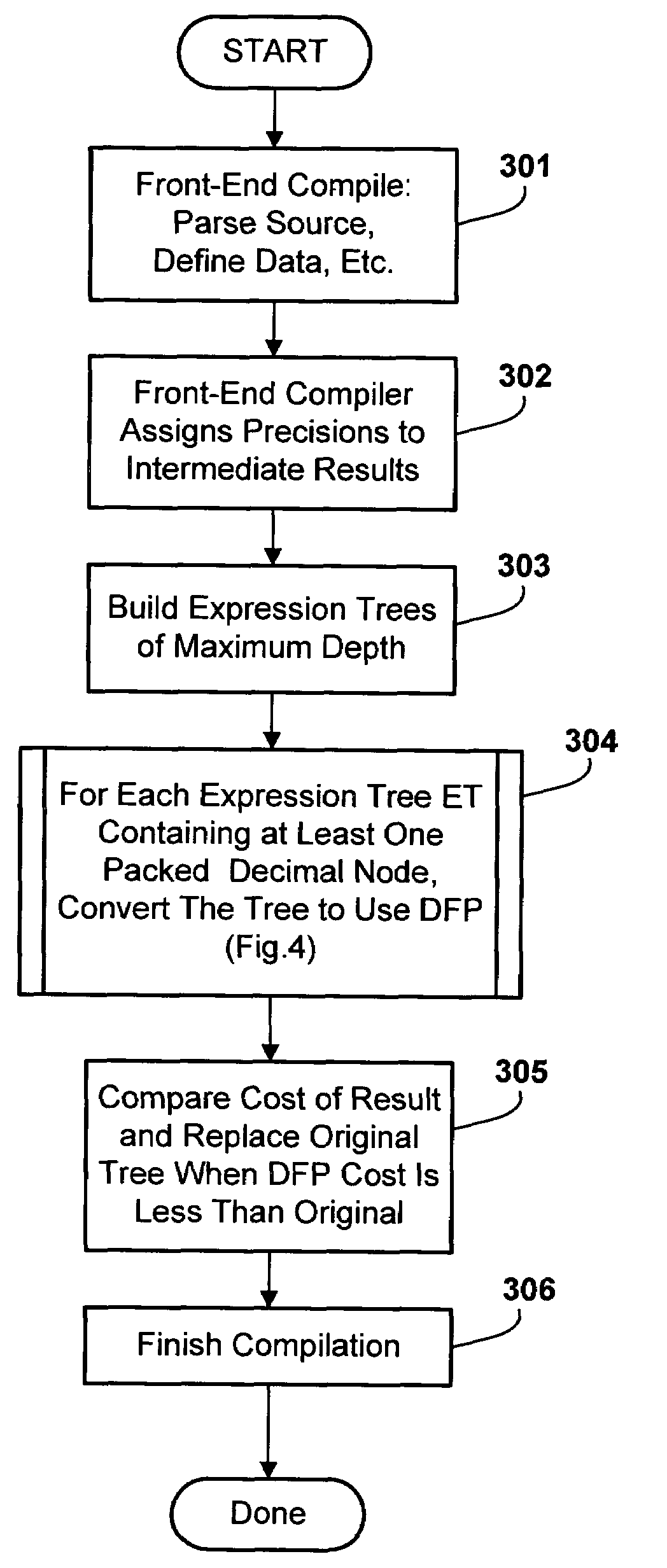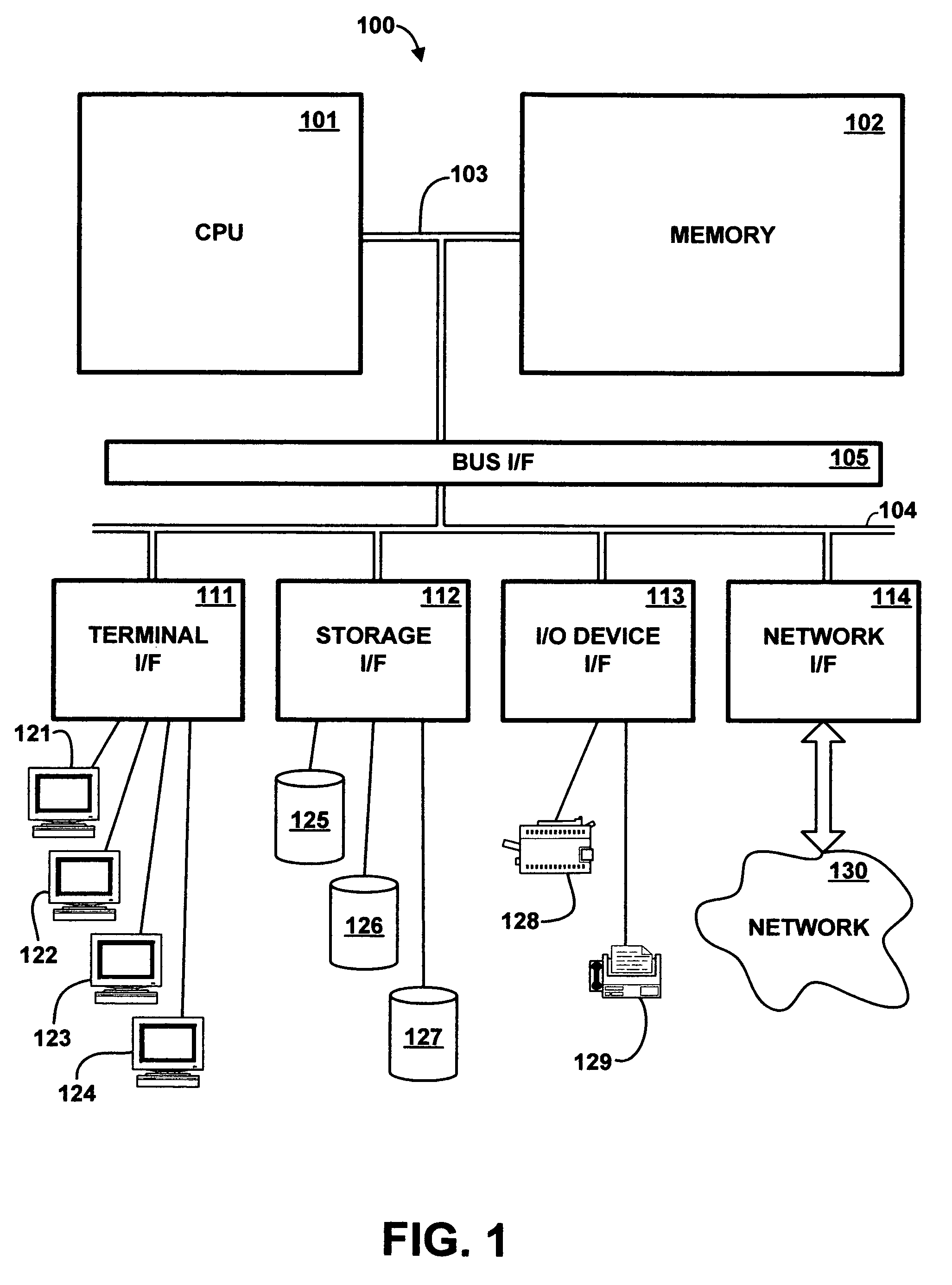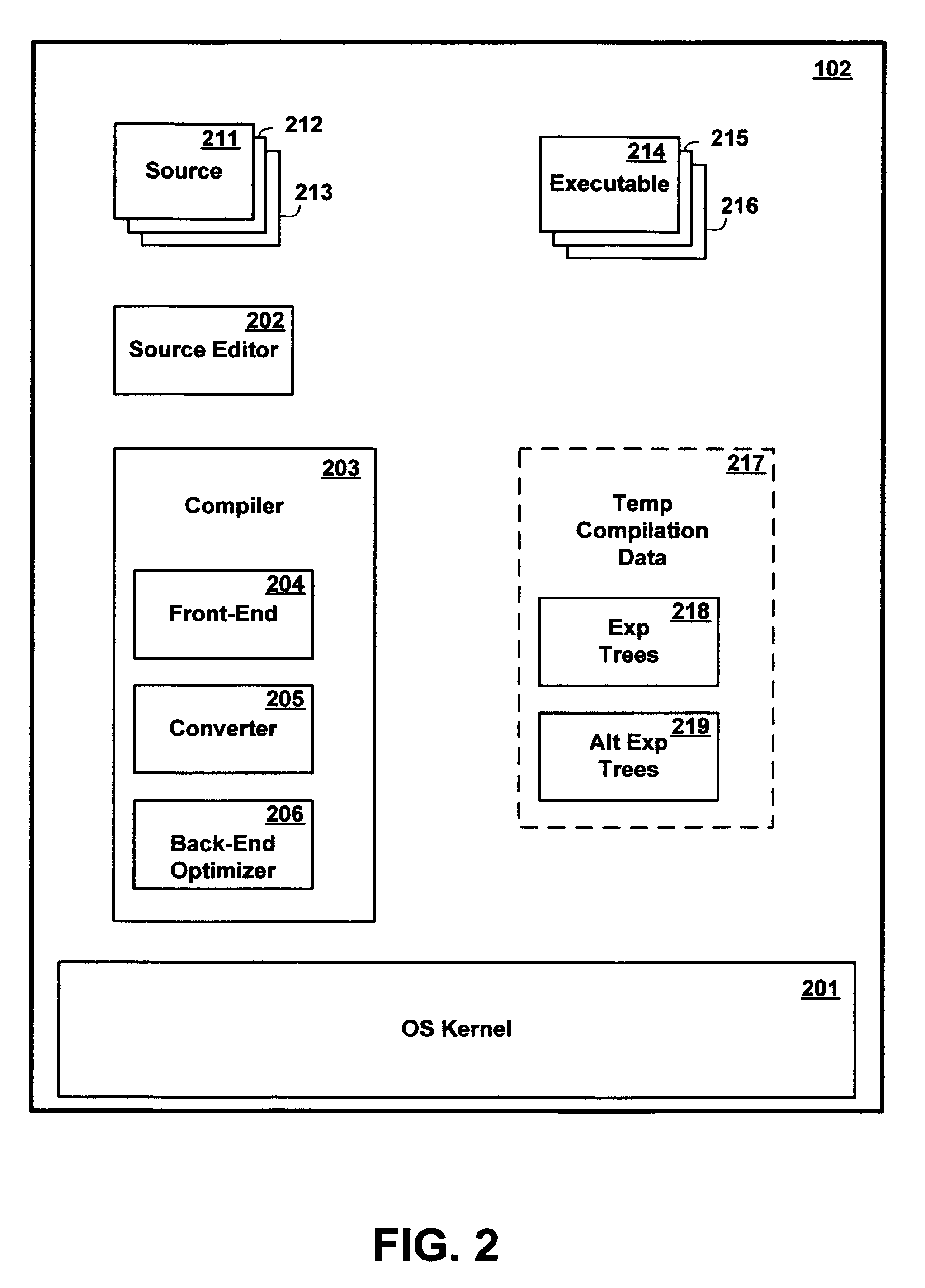Method and apparatus for automatically converting numeric data to a processor efficient format for performing arithmetic operations
a technology of arithmetic operations and numeric data, applied in the field of digital data processing, can solve the problems that the cost of converting and re-converting between the two formats may outweigh the performance benefit of using floating point hardwar
- Summary
- Abstract
- Description
- Claims
- Application Information
AI Technical Summary
Benefits of technology
Problems solved by technology
Method used
Image
Examples
Embodiment Construction
[0027]Referring to the Drawing, wherein like numbers denote like parts throughout the several views, FIG. 1 is a high-level representation of the major hardware components of a computer system 100 which automatically converts numeric operands in source code to a processor-efficient format, according to the preferred embodiment of the present invention. CPU 101 is a general-purpose programmable processor which executes instructions and processes data from main memory 102. Main memory 102 is preferably a random access memory using any of various memory technologies, in which data is loaded from storage or otherwise for processing by CPU 101.
[0028]Memory bus 103 provides a data communication path for transferring data among CPU 101, main memory 102 and I / O bus interface unit 105. I / O bus interface 105 is further coupled to system I / O bus 104 for transferring data to and from various I / O units. I / O bus interface 105 communicates with multiple I / O interface units 111-114, which may also ...
PUM
 Login to View More
Login to View More Abstract
Description
Claims
Application Information
 Login to View More
Login to View More - R&D
- Intellectual Property
- Life Sciences
- Materials
- Tech Scout
- Unparalleled Data Quality
- Higher Quality Content
- 60% Fewer Hallucinations
Browse by: Latest US Patents, China's latest patents, Technical Efficacy Thesaurus, Application Domain, Technology Topic, Popular Technical Reports.
© 2025 PatSnap. All rights reserved.Legal|Privacy policy|Modern Slavery Act Transparency Statement|Sitemap|About US| Contact US: help@patsnap.com



